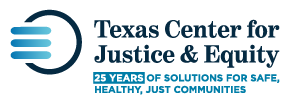What is harm reduction?
The goal of harm reduction is to keep users of drugs healthy and safe. Harm reduction represents both a set of practical strategies and a larger social justice movement. It is grounded in the idea that people who use drugs deserve respect and fundamental rights. Learn more about harm reduction here.
What is a “Good Samaritan” law?
If a person is experiencing a suspected overdose, a Good Samaritan law should allow them or someone with them to call 9-1-1 without fear of being arrested and prosecuted.
In 2021, the Texas Legislature passed an ineffective Good Samaritan law (House Bill 1694) – it doesn’t apply to 9-1-1 callers who have a felony record or who’ve called 9-1-1 for an overdose in the past 18 months. This means that people may not call 9-11 for lifesaving help because they fear jail time.
An effective Good Samaritan law should provide protection from prosecution for people who have drug convictions or who have called 9-1-1 previously because of an overdose.
Quick facts:
- Data from CDC’s National Center for Health Statistics indicate that there were an estimated 107,622 drug overdose deaths in the United States during 2021, an increase of nearly 15% from the 93,655 deaths estimated in 2020.1
- Good Samaritan laws that provide comprehensive protections for people who report an overdose are associated with up to a 15% percent reduction in overdose deaths, and are not associated with an increase in drug use.2
- Police involvement is consistently cited as the number one reason that people don’t call 9-1-1 during an overdose. And it is a strong reason: less than 50% of overdoses result in a call for help.3
What is safe usage?
Safe Syringe Programs
This is a public health strategy for people who inject drugs. These programs attempt to reduce diseases – like HIV infection, viral hepatitis, and other blood-borne infections – by promoting the use of new or sterile needles for each injection. Core services include syringe distribution and disposal options, while expanded services improve the health and well-being of people who use drugs. Ideally, both core and expanded services would be provided in the community.4
Fentanyl Testing Strips
These are an inexpensive way to help prevent drug overdoses and reduce harm. They’re “small strips of paper that can detect the presence of fentanyl in all different kinds of drugs (cocaine, methamphetamine, heroin, etc.) and drug forms (pills, powder, and injectables).”5 It’s important to note that fentanyl testing strips don’t guarantee that the substance being tested contains no fentanyl; users must test individual amounts of drugs (for example, each pill, or separate amounts of powder). Still, these test strips can provide people who use drugs with more information to increase their safety.
Quick facts:
- Over 2,500 new HIV infections occur each year among people who inject drugs.6
- The opioid crisis is fueling a dramatic increase in infectious diseases associated with injection drug use.7
- Over 150 people die every day from overdoses related to synthetic opioids like fentanyl.8
- Test strips are low-cost and typically give results within 5 minutes, which can be the difference between life and death.9
What is Narcan?
“Narcan is a life-saving medication that can reverse an overdose from opioids – including heroin, fentanyl, and prescription opioid medications – when given [to an overdosing person] in time.”10
Narcan is also commonly referred to by its generic name, Naloxone. Texas has made Narcan available at local pharmacies, but it can cost as much as $100, making it too expensive to purchase. Texas should make Narcan readily accessible to people in their communities.11
Quick facts:
- In nearly 40% of overdose deaths, someone else was present.12 Having Naloxone available allows bystanders to help prevent a fatal overdose and save lives.
- There are two forms of Naloxone that anyone can use without medical training or authorization: pre-filled nasal spray and injectable.
What can you do?
- Check out these resources to learn more:
- Contact your local and state representatives and ask them to support (1) a comprehensive Good Samaritan law, (2) a bill decriminalizing drug paraphernalia, like syringes and fentanyl testing strips, and (3) increased funding for Narcan so more people can buy it.
- Donate to TCJE so we can continue to fight for harm reduction at the Texas Capitol and in communities across the state!
- If you haven't yet, read and share our 'zine, "What Is Harm Reduction?"
1 Centers for Disease Control and Prevention, "U.S. Overdose Deaths In 2021 Increased Half as Much as in 2020 – But Are Still Up 15%," National Center for Health Statistics, May 2022.
2 National Bureau of Economic Research, "A Little Help from my Friends: The Effects of Naloxone Access and Good Samaritan Laws on Opioid-Related Deaths," NBER Working Paper Series, February 2017.
3 Koester, S., Mueller, S. R., Raville, L., Langegger, S., & Binswanger, I. A., "Why are some people who have received overdose education and naloxone reticent to call Emergency Medical Services in the event of overdose?" International Journal of Drug Policy, 48, October 2017.
4 Ibid.
5 Centers for Disease Control and Prevention, "Fentanyl Test Strips: A Harm Reduction Strategy," Stop Overdose, September 2022.
6 Centers for Disease Control and Prevention, "Estimated HIV incidence and prevalence in the United States, 2010–2015. HIV Surveillance Supplemental Report," HIV Surveillance Report, Supplemental Report, March 2018.
7 Centers for Disease Control and Prevention, "Syringe Services Programs (SSPs) Fact Sheet," May 2019.
8 Centers for Disease Control and Prevention, "Provisional Drug Overdose Death Counts," National Vital Statistics System, March 2023.
9 Centers for Disease Control and Prevention, "Fentanyl Facts," Stop Overdose, February 2022.
10 Centers for Disease Control and Prevention, "Lifesaving Naloxone," Stop Overdose, January 2023.
11 Good RX, "Generic Narcan."
12 O’Donnell J, Gladden RM, Mattson CL, Hunter CT, Davis NL, "Vital Signs: Characteristics of Drug Overdose Deaths Involving Opioids and Stimulants — 24 States and the District of Columbia, January–June 2019." Morbidity and Mortality Weekly Report, September 2020.
